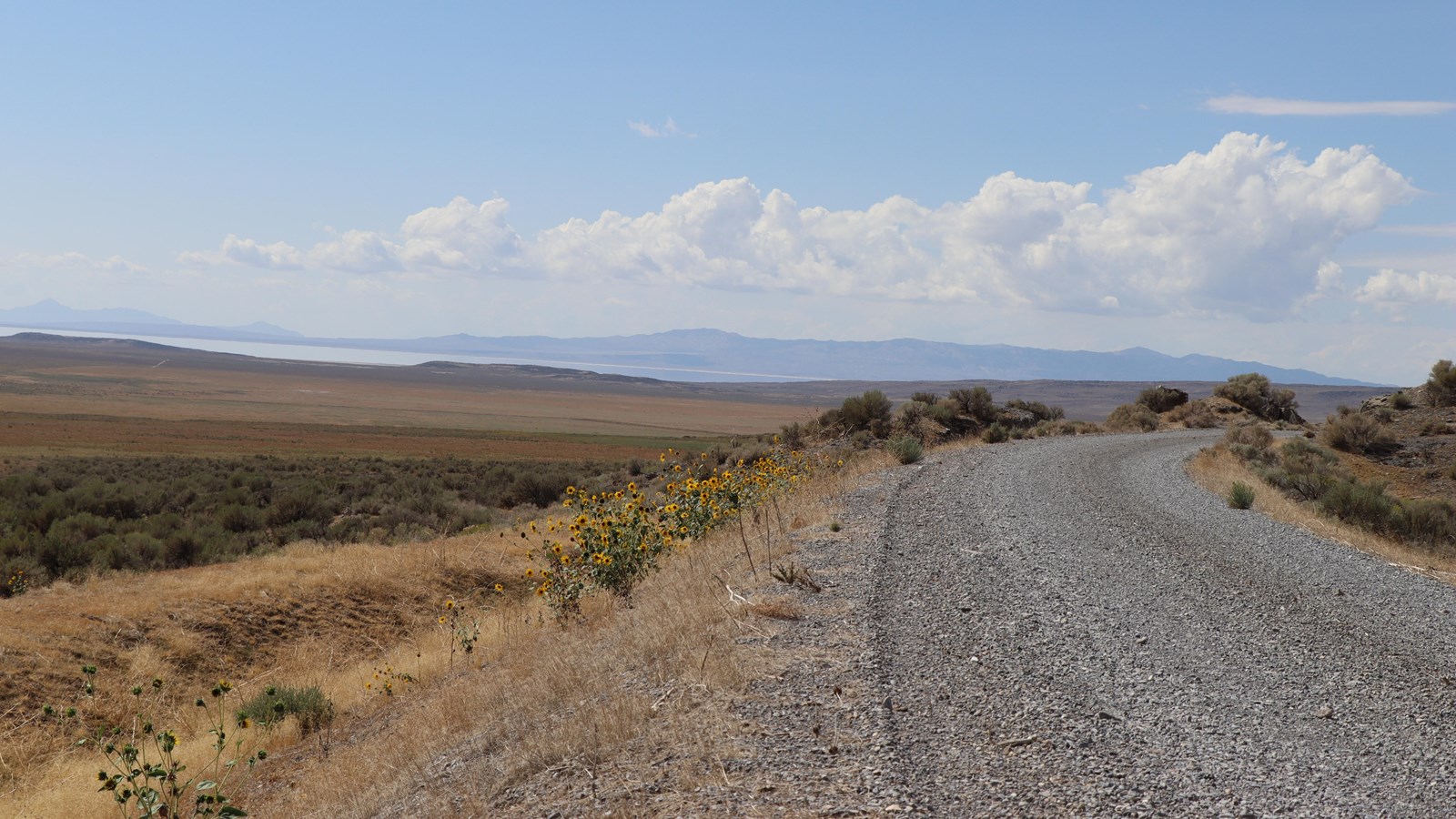Last updated: May 6, 2025
Place
#5 A Hand-Built Railroad

NPS Photo
The long winding grade you are traveling and the Union Pacific grade on your right are testimony to the organization of the workers. Second Lieutenant Charles Currier, U.S. Infantry, one of the first men to travel on the completed transcontinental railroad, observed a fill like this under construction.
"I can count five hundred men and one hundred fifty carts drawn by patient mules hauling dirt to grade the permanent track... there are plows, scrapers, & etc. The mules are well trained; they climb up and down the bank, stop at the right place and wait 'til their load is dumped, then take their place in the line and go back to get another. They look like ants. The place is black with laborers; they stand as near together as they can shovel. It's a funny sight to see five hundred shovels going into the air at one time."
Do you see the rock culvert in the Union Pacific grade? This and others like it were laid without mortar in 1869 and have survived the years. Watch for others in the park.
"I can count five hundred men and one hundred fifty carts drawn by patient mules hauling dirt to grade the permanent track... there are plows, scrapers, & etc. The mules are well trained; they climb up and down the bank, stop at the right place and wait 'til their load is dumped, then take their place in the line and go back to get another. They look like ants. The place is black with laborers; they stand as near together as they can shovel. It's a funny sight to see five hundred shovels going into the air at one time."
Do you see the rock culvert in the Union Pacific grade? This and others like it were laid without mortar in 1869 and have survived the years. Watch for others in the park.
-
A Hand-Built Railroad
The long winding grade you are traveling and the Union Pacific grade on your right are testimony to the organization of the workers. Second Lieutenant Charles Currier, U.S. Infantry, one of the first men to travel on the completed transcontinental railroad, observed a fill like this under construction.
- Date created:
- 04/12/2025
